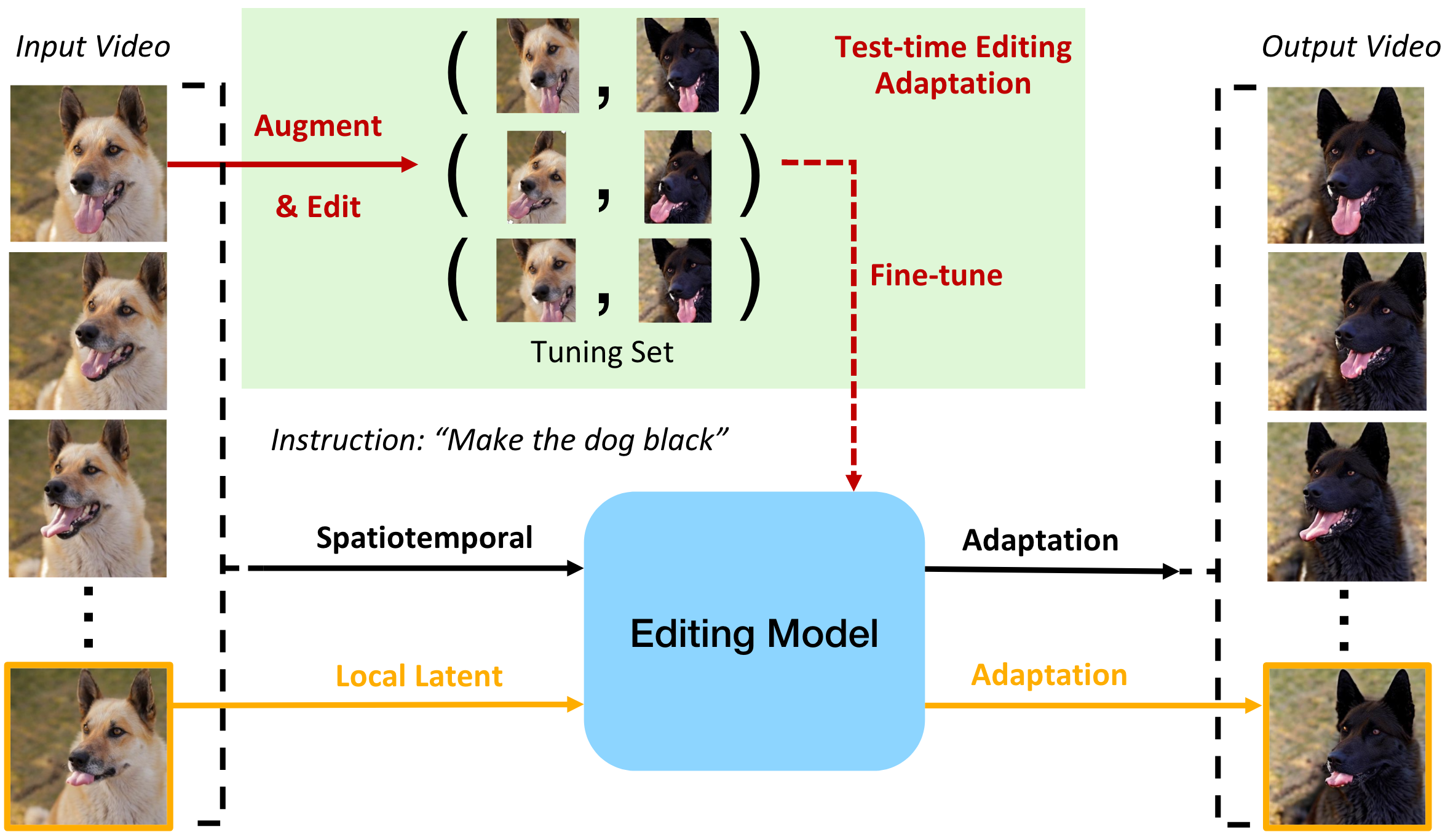Video editing stands as a cornerstone of digital media, from entertainment and education to professional communication. However, previous methods often overlook the necessity of comprehensively understanding both global and local contexts, leading to inaccurate and inconsistency edits in the spatiotemporal dimension, especially for long videos. In this paper, we introduce VIA, a unified spatiotemporal VIdeo Adaptation framework for global and local video editing, pushing the limits of consistently editing minute-long videos. First, to ensure local consistency within individual frames, the foundation of VIA is a novel test-time editing adaptation method, which adapts a pre-trained image editing model for improving consistency between potential editing directions and the text instruction, and adapts masked latent variables for precise local control. Furthermore, to maintain global consistency over the video sequence, we introduce spatiotemporal adaptation that adapts consistent attention variables in key frames and strategically applies them across the whole sequence to realize the editing effects. Extensive experiments demonstrate that, compared to baseline methods, our VIA approach produces edits that are more faithful to the source videos, more coherent in the spatiotemporal context, and more precise in local control. More importantly, we show that VIA can achieve consistent long video editing in minutes, unlocking the potentials for advanced video editing tasks over long video sequences.
 Long Video Editing
Long Video Editing 
